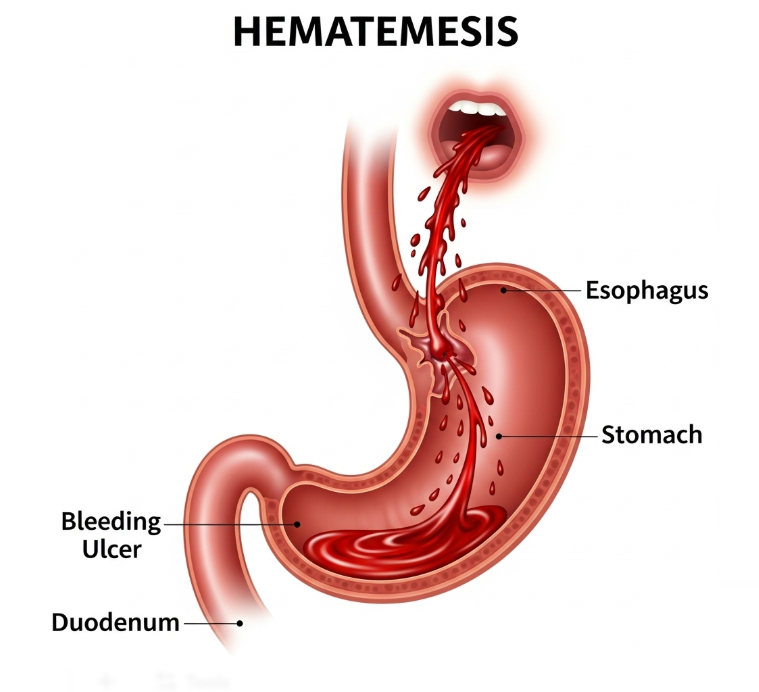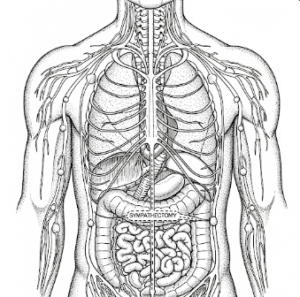Overview
Hematemesis refers to the vomiting of blood, usually from bleeding in the upper gastrointestinal (GI) tract, including the esophagus, stomach, or the first part of the small intestine (duodenum). In Korea, it is considered a medical emergency and requires immediate evaluation and treatment, as it may indicate life-threatening conditions such as peptic ulcer bleeding, esophageal varices (often from liver disease), or gastric cancer. Advanced healthcare facilities in Korea provide rapid diagnosis and multidisciplinary management to ensure the best outcomes.
What is Hematemesis?
Hematemesis is the expulsion of fresh red blood or coffee-ground–like material during vomiting. The appearance depends on the location, cause, and severity of bleeding. It can affect both young and older adults, though it is more common in individuals with chronic liver disease, peptic ulcer disease, or gastric malignancies.
Symptoms
- Vomiting of blood (bright red or coffee-ground appearance)
- Abdominal pain or discomfort
- Black, tarry stools (melena)
- Dizziness, fainting, or weakness (due to blood loss)
- Low blood pressure, rapid heartbeat, or shock in severe cases
Causes
- Peptic ulcers (gastric or duodenal) – the most common cause
- Esophageal varices from chronic liver disease or cirrhosis
- Gastritis or erosions of the stomach lining
- Mallory-Weiss tear (tear in the esophagus from severe vomiting)
- Gastric or esophageal cancer
- Use of NSAIDs, aspirin, or anticoagulants
- Severe gastroesophageal reflux disease (GERD)
Risk Factors
- Chronic alcohol use
- Liver cirrhosis (common in patients with hepatitis B or C, which are relatively prevalent in Korea)
- Long-term NSAID or aspirin use
- History of peptic ulcer disease
- Smoking
- Family history of gastric cancer (especially relevant in Korea, where stomach cancer is relatively common)
Complications
- Severe blood loss leading to shock
- Anemia from chronic bleeding
- Aspiration pneumonia if blood is inhaled into the lungs
- Death if massive bleeding is untreated
- Recurrence of bleeding, particularly in cases of varices or ulcers
Prevention
- Limit alcohol consumption to reduce risk of liver disease and varices
- Avoid unnecessary or prolonged use of NSAIDs and aspirin
- Early detection and treatment of H. pylori infection, a major cause of peptic ulcers in Korea
- Regular gastroscopy (endoscopy) for high-risk groups (e.g., patients with chronic gastritis, atrophic gastritis, family history of gastric cancer)
- Vaccination and treatment for hepatitis B to prevent cirrhosis and varices
Treatment Options in Korea
In Korea, management of hematemesis is carried out in emergency departments and specialized gastroenterology centers, with advanced diagnostic and therapeutic options available.
- Emergency Stabilization
- IV fluids and blood transfusion if necessary
- Monitoring of blood pressure, pulse, and hemoglobin
- Oxygen support if needed
- Diagnosis
- Upper GI endoscopy (esophagogastroduodenoscopy, EGD): Gold standard for identifying bleeding source
- Blood tests (hemoglobin, coagulation profile, liver function)
- Imaging (CT angiography) if endoscopy is inconclusive
- Medical Treatment
- Proton pump inhibitors (PPIs) to reduce stomach acid and stabilize clot formation
- Antibiotics in variceal bleeding to prevent infection
- Octreotide or terlipressin for variceal bleeding management
- Endoscopic Therapy
- Injection therapy (e.g., epinephrine) to stop bleeding
- Thermal coagulation (heat or laser to seal vessels)
- Hemoclips to close bleeding vessels
- Variceal band ligation for esophageal varices
- Surgical and Interventional Treatment
- Transjugular intrahepatic portosystemic shunt (TIPS): For severe or recurrent variceal bleeding in liver disease
- Surgical resection or repair for uncontrolled bleeding or gastric cancer-related hematemesis
- Long-term Follow-Up
- Regular endoscopy for patients with ulcers, varices, or cancer risk
- Chronic PPI therapy for ulcer patients
- H. pylori eradication therapy when infection is confirmed
- Liver disease management programs for cirrhosis patients












